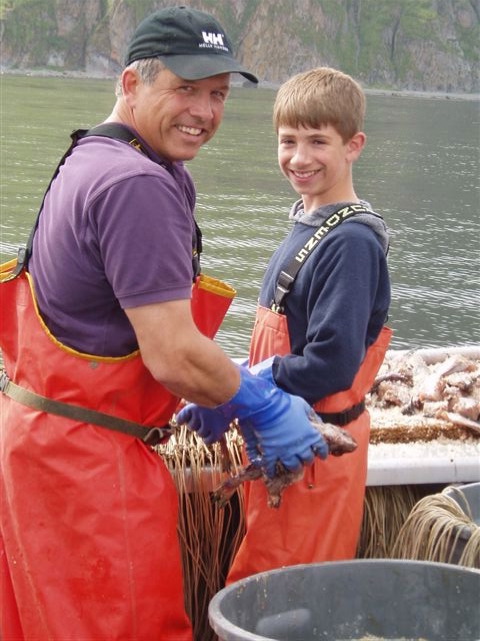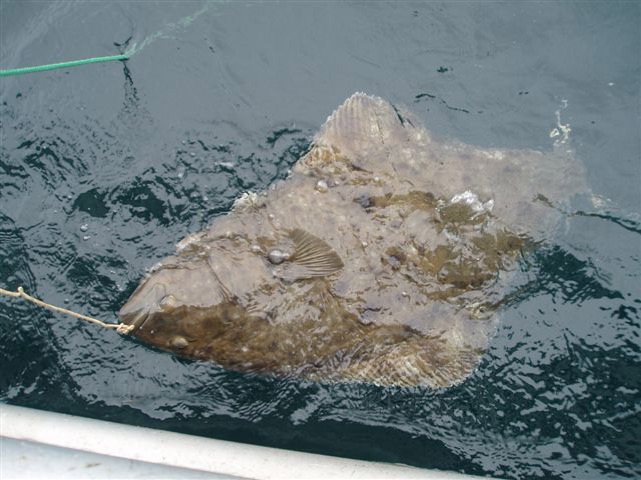| « No Bull: Del Toro to Close | The Best and The Local » |
Ingredient Thu Mar 08 2007
Direct from Alaska!
 Despite the weather, spring’s approach is inevitable. On the other end of the continent, incremental changes in water temperature and lengthening days signal the end of the winter season, and deep in the waters off Alaska’s rugged coastline, a valuable resource makes itself available for harvest. The 2007 Alaskan halibut season opens on March 10th, and with it, the opportunity to enjoy one of our favorite seafood options! Alaskan halibut fishermen are subject to a myriad of governmental regulations designed to protect the sustainability of the population. In Alaska, commercial fishermen (and then only those holding proper permits) are only allowed to fish for halibut for about 9 months of the year; and that season will begin on Saturday.
Despite the weather, spring’s approach is inevitable. On the other end of the continent, incremental changes in water temperature and lengthening days signal the end of the winter season, and deep in the waters off Alaska’s rugged coastline, a valuable resource makes itself available for harvest. The 2007 Alaskan halibut season opens on March 10th, and with it, the opportunity to enjoy one of our favorite seafood options! Alaskan halibut fishermen are subject to a myriad of governmental regulations designed to protect the sustainability of the population. In Alaska, commercial fishermen (and then only those holding proper permits) are only allowed to fish for halibut for about 9 months of the year; and that season will begin on Saturday.
With a wide variety of wholesalers bringing literally tons of fresh Alaskan halibut into Chicago in the coming weeks, there is no shortage of this fantastic fish. Modern airfreight capabilities mean that high quality fish can hit the fish cases of local supermarkets and specialty shops less than 24 hours after capture! Thanks, in part, to the busy cargo terminal of O’Hare International Airport.
The modern halibut season is designed not only to offer some form of protection to halibut stocks, but also to provide halibut fishermen with an opportunity to pursue their livelihood in a safe and economically feasible manner. Halibut fishermen have an extended season (it will run until mid-November) allowing them the opportunity to change plans in the event of poor weather, mechanical problems, or other difficult situations. Within these time limits, fishermen work off a quota system, regulated by
The International Pacific Halibut Commission and designed to allow the maximum sustained yield of halibut.

Halibut are caught by long-lining; a system of weighted ground lines with sets of baited hooks attached to them designed to specifically attract halibut, which are flat-fish and spend most of their time feeding on the ocean floor. The sets sit in the water anywhere from a few hours to a full day, until the fishermen pull them in, remove the fish, stun them and clean them before holding the fish on ice for the return trip home.

Much of the halibut we have the opportunity to enjoy here in Chicago is coming out of the Gulf of Alaska, where it was most likely brought in to port in Kodiak, flown to Anchorage, and then on to Chicago. Depending on the company, this fish can literally be less than 2 to 3 days out of the water.
With the season opening on March 10, you can expect to find fresh Alaskan halibut hitting the stores around March 14 or 15. Price will be high on this first fish of the year, but watch for it to slowly come down as the season wears on.
When buying fresh halibut, look for bright white meat with a firm consistency. Don’t hesitate to ask the person working the fish counter to let you smell the fish - always a telltale sign of freshness. Fish should smell like fish, but it should smell like fish you want to take a bite of right there, not something you wrinkle your nose at. You will find halibut available in steaks, fillets, and sometimes even cheeks (literally!).
Halibut is an amazingly versatile fish; use it in almost any recipe! Grill it, broil it, bake it, fry it, put it in chowder, wrap it in bacon, stick it in a sandwich - you can really play with this fish and rarely will you be disappointed! With a good healthy fat content, halibut will stay nice and moist, even if you try and overcook it; it’s a very forgiving fish.
If you don’t feel like cooking it yourself, head over to Naha where chef/owner Carrie Nahabedian definitely plans to get in on early shipments of spring halibut, “one of my favorite ways to serve halibut is to crust it with brioche, and serve it with a beautiful salad of Belgian endive, French green beans, salsify, and some spring morels, with a nice grain mustard sauce.”
Halibut is also a great choice for those of you looking for an environmentally friendly seafood choice. Michelle Jost, who runs the Right Bite program at the Shedd Aquarium says, “halibut is an excellent choice for people looking for sustainable seafood” and it’s rated green for “best choice” on the Shedd’s pocket guide to sustainable seafood choices.









Smith / March 9, 2007 1:20 PM
great article!